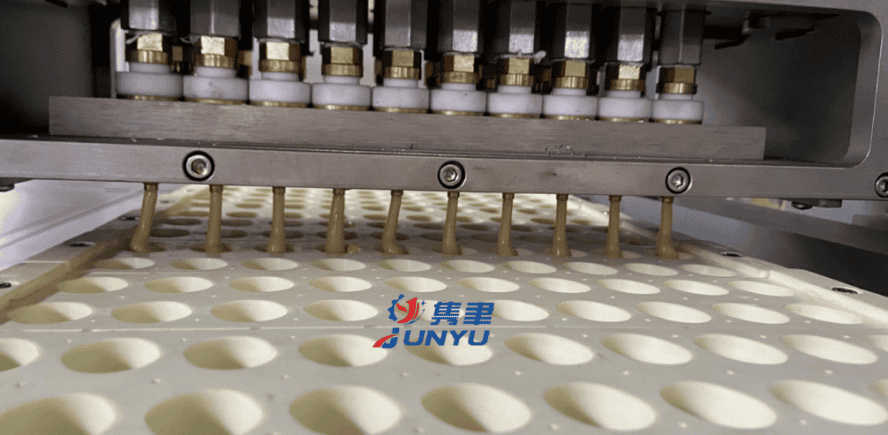To make a biscuit, a baker must use penetrative heat and sufficient baking and cooling time. A proper baking process will result in an even moisture content, avoiding checking. Different types of biscuits require different baking processes for different appearances. A bland colour is required for a plain biscuit, while other products require highlights and colour contrasts. The baking systems used for biscuits will depend on the type of product to be produced.
Processes
In biscuit factories, the dough is formed into balls, or ‘bricks’, by mixing ingredients. These dough balls are then placed into a baking chamber, where they are baked. The dough pieces are then rotated in the oven. The baking chamber is heated to about 130 degrees. The temperature in the baking chamber determines how much moisture is lost from each biscuit piece. This process can be done at a variety of temperatures.
The oven operator checks the tracking of the band of the oven and notifies the production manager. If there is a power failure, he will need to manually remove trapped biscuits. Another task of the oven operator is to check the oven safety sheets. The packing area is the busiest in both automated and semi-automatic factories. The operators manually feed biscuits into feeding chutes. They check the labels, dates, and other details.
Ingredients
There are several steps involved in the production of biscuits in a factory. These steps involve sifting flour, crushing sugar and other ingredients and then mixing them properly. The process is usually two to five minutes long. By the end of it, the dough will be evenly mixed. It is then kneaded and directly rolled into cookies. Some cookies require additional ingredients, such as sesame seeds or peanuts, to be sprinkled on top before baking. Once shaped, biscuits are transported to the oven and heated using electric heaters.
Traditionally, biscuits are made with wheat flour, sugar, and partially hydrogenated vegetable oils. Biscuit production also includes milk solids, ghee, and yeast. They also contain various additives and flavours. Despite the fact that biscuit production is simple, there are some challenges involved. Here, we’ll discuss the key ingredients and steps involved in manufacturing biscuits. We’ll also look at biscuit-making equipment.
Baking
There are several factors to consider before baking biscuits. The water in the dough plays a vital role in the texture and structure of the finished product. The water hydrates protein molecules, allowing the formation of gluten, and allows the starch granules to swell and gelatinise. Ultimately, water is the most important ingredient in biscuits. The consistency and shape of the finished product are determined by the amount of water in the dough, and the amount of flour should be slightly more than one third water.
During the baking process, free water in the dough must evaporate. This process requires higher temperatures than ambient air, which causes the dough to degas. This latent heat can help raise the temperature of the finished product. In addition, moist air in the first baking zone of the oven is essential, and the injection of steam during baking can be helpful. Some manufacturers use a combination of methods to achieve a desired texture. The different types of baking systems can enhance the appearance of finished products.
Packaging
Factory-made biscuits must be packaged with a barrier that prevents moisture from penetrating through the packaging. The barrier can be made of plastic, printed paper, or a variety of laminates. These films are often heat-sealed, which makes them ideal for this use. Moisture-proofing properties of packaging materials are determined by their basic moisture-proofness and how effective the seals are. Shelf-life testing also includes a moisture-proofness test.
Most consumers purchase biscuits on impulse. Therefore, the design of packaging is crucial to attract customers. The packaging of biscuits should be both attractive and informative about what it contains. Many markets require packaging of biscuits to bear “sell by” and “best before” dates. Consumers may feel reassured by the fact that these products are safe only when they have met a specific date. As a result, the packaging must display these information prominently.
Origins
The history of biscuits can be traced back to around 1500 BC. Biscuits were originally a luxury item and were only eaten by the upper class. Over time, they gained a greater role in the diet, becoming available to more people. During the Industrial Revolution, quality biscuits became more affordable, making them a part of the diet of most people. Today, they are widely available, sold as health foods in stores and are used for a variety of purposes, from boosting immune systems to assisting with slimming.
Early mass-produced biscuits were unsweetened and are often referred to as crackers in modern parlance. The first step of the biscuit making process was rolling out the dough on a machine known as a dough brake, the domestic equivalent of a pastry board or rolling pin. These machines remained in use until the early twentieth century. However, they were less efficient than traditional methods and required more work. Biscuit factories required more than one machine to produce one batch of biscuits.
Production
There are many different ways of producing biscuits, but the most common way is through the use of machines. These machines bake the biscuits in ovens, which use convection and radiation to create the correct volume and color. After baking, the biscuits are then transported on conveyor belts to cooling rooms. This process is called natural cooling, and it is preferred over forced cooling as it keeps the texture and color of the biscuits. Once cooled, the biscuits are sent to packaging machines where they are placed in various packaging forms including slug, pouch, family, or family packs. Quality control checks are conducted at each stage of production, including the packaging stage.
Biscuits are categorized into four main types based on their ingredients. Each type has its own specific baking and mixing processes, and each one is adapted to local ingredients and production equipment. In addition, biscuits come in various shapes, colors, and sizes, and can be eaten by people of all ages. Therefore, it is vital for biscuit manufacturers to understand the ingredients, and the process of making them. Listed below are the four stages of biscuit production:





